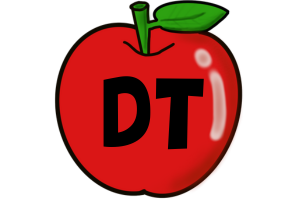Introduction:
Welcome to “Building Strong Foundations: A Comprehensive English Curriculum.” In this in-depth and carefully crafted guide, we will take you on a journey of creating an English curriculum that nurtures language proficiency and engages students in meaningful learning experiences. Designed to provide a comprehensive understanding of each step, we will explore examples and explanations to ensure you develop an effective curriculum that meets the diverse needs of your students. Whether you are a seasoned educator or new to curriculum design, this guide will equip you with the knowledge and strategies to build a solid foundation in English language education. Together, let’s embark on this exciting journey of curriculum development!

Step 1: Identify Learning Objectives The first step in creating an English curriculum is to establish clear and specific learning objectives. These objectives serve as guiding beacons, defining what you want your students to achieve in terms of language skills, knowledge, and competencies. By setting measurable goals, you provide a clear direction for your curriculum design, ensuring that every step contributes to the overall learning outcomes. For instance, you may focus on enhancing reading comprehension, developing writing proficiency, improving grammar accuracy, expanding vocabulary, or refining oral communication skills. Each objective brings a unique dimension to your curriculum, addressing the multifaceted nature of language learning.
Step 2: Assess Students’ Needs and Abilities To effectively meet your students’ needs, it is essential to assess their current English language abilities and identify their specific learning requirements. This stage involves conducting comprehensive assessments, such as diagnostic tests, interviews, and observations, to gather data on students’ language proficiency, learning styles, and individual strengths and weaknesses. By understanding their existing knowledge and learning preferences, you gain valuable insights that inform your curriculum design. This student-centered approach ensures that your curriculum is tailored to address the unique challenges and aspirations of each learner, fostering an inclusive and supportive learning environment.
Step 3: Determine Scope and Sequence With learning objectives and student assessments in hand, you are ready to determine the scope and sequence of your curriculum. This step involves carefully selecting the topics, themes, and language skills to be covered in each unit or module, as well as establishing the order in which they will be taught. The scope and sequence should follow a logical progression, ensuring that each new concept builds upon previously acquired knowledge. By organizing your curriculum in a coherent manner, you create a scaffolding structure that facilitates seamless transitions between different language components, enabling students to develop a holistic understanding of the English language.
Step 4: Select Appropriate Resources and Materials A well-designed curriculum requires the selection of appropriate resources and materials that align with your learning objectives and engage students’ interests. These resources can include textbooks, authentic texts, online platforms, multimedia materials, and interactive activities. By carefully curating a diverse range of resources, you cater to different learning styles and provide students with varied opportunities to explore, practice, and apply their language skills. Engaging and relevant materials not only enhance students’ motivation but also expose them to real-world language use, fostering authentic learning experiences.
Step 5: Plan Engaging Lesson Activities To bring your curriculum to life, it is crucial to develop detailed lesson plans that incorporate a wide range of activities. These activities should align with the curriculum objectives, provide ample opportunities for students to engage in reading, writing, listening, and speaking, and foster critical thinking and problem-solving skills. By utilizing instructional techniques such as group work, pair work, discussions, debates, presentations, and role-plays, you create a dynamic and interactive learning environment that encourages active participation and collaboration. Engaging lesson activities not only deepen students’ understanding but also make learning enjoyable and memorable.
Step 6: Assess and Evaluate Student Progress Assessment plays a vital role in tracking student progress and measuring the effectiveness of your curriculum. Regularly assess and evaluate students’ understanding and mastery of the curriculum through a combination of formative and summative assessments. Formative assessments, such as quizzes, classroom observations, and projects, provide ongoing feedback that helps guide instruction and address individual needs. Summative assessments, such as exams or portfolios, measure overall achievement and serve as milestones in students’ language learning journey. By utilizing a range of assessment methods, you gain a comprehensive view of students’ strengths, areas for improvement, and growth over time, allowing you to make informed instructional decisions and tailor interventions as necessary.
Step 7: Provide Ongoing Feedback and Support Creating an effective English curriculum extends beyond planning and delivering lessons. It involves providing ongoing feedback and support to students throughout their learning journey. Regularly offer constructive feedback that highlights students’ achievements and identifies areas for improvement. Encourage self-assessment and reflection, empowering students to take ownership of their learning and set personal goals. Provide individualized support and additional resources to students who require further assistance, ensuring that no learner is left behind. By creating a nurturing and supportive classroom environment, you foster a growth mindset and cultivate a love for lifelong learning.
Step 8: Continuous Curriculum Review and Improvement A successful English curriculum is a dynamic entity that evolves with the changing needs and advancements in language education. Regularly review and evaluate the effectiveness of your curriculum, seeking feedback from students, colleagues, and your own observations. Stay updated with the latest research, teaching methodologies, and technological advancements, integrating innovative practices into your curriculum design. Embrace a growth mindset, continuously refining and improving your curriculum to meet the evolving needs of your students. By embracing a culture of continuous improvement, you ensure that your curriculum remains relevant, engaging, and effective in nurturing strong foundations in English language education.
Examples:
Learning Objective: Enhance Writing Proficiency
Assessment: Diagnostic Writing Task
- Students will complete a diagnostic writing task to assess their writing skills, grammar usage, vocabulary, and organization. This task will provide valuable insights into their current abilities and learning needs.
Unit 1: Introduction to Narrative Writing
- Theme: Personal Stories
- Skills Covered: Descriptive language, plot development, character development
- Scope: Students will learn to write personal narratives by incorporating descriptive language, developing engaging plots, and creating well-rounded characters.
Resources and Materials:
- Book: “The House on Mango Street” by Sandra Cisneros
- Short stories and personal narratives from various authors
Lesson Activity: Analyzing Descriptive Language
- Read a passage from “The House on Mango Street” that exemplifies descriptive language.
- Discuss the impact of vivid descriptions on the reader’s experience.
- Engage students in a group activity where they analyze descriptive language in short stories and personal narratives, identifying techniques used by the authors.
Assessment: Descriptive Writing Assignment
- Students write a descriptive paragraph or short story using the techniques discussed in class. Provide feedback on their use of descriptive language, structure, and creativity.
Unit 2: Argumentative Writing
- Theme: Social Issues
- Skills Covered: Claim development, evidence analysis, counterarguments
- Scope: Students will develop skills in constructing persuasive arguments by formulating clear claims, supporting them with evidence, and addressing counterarguments.
Resources and Materials:
- Articles and opinion pieces from reputable sources on social issues (easily available online)
Lesson Activity: Analyzing Arguments
- Read and analyze an article or opinion piece on a social issue, identifying the author’s claim, supporting evidence, and counterarguments.
- Engage students in a discussion, encouraging them to critically evaluate the effectiveness of the argument.
Assessment: Argumentative Essay
- Students write an argumentative essay on a social issue of their choice, presenting a clear claim, supporting it with evidence, and addressing counterarguments. Provide feedback on their argument development, logical reasoning, and use of evidence.
Continuous Curriculum Review and Improvement:
- Regularly assess student progress through formative assessments, such as writing samples and classroom discussions.
- Collect feedback from students on their learning experiences and adjust instructional strategies accordingly.
- Stay updated with educational research and resources to enhance and refine the curriculum over time.
Conclusion
The example English curriculum presented here aims to cultivate strong foundations in writing proficiency by incorporating narrative and argumentative writing. Through a step-by-step approach, teachers can guide students in developing their writing skills while fostering creativity, critical thinking, and effective communication.
By beginning with a diagnostic writing task, teachers can assess students’ current abilities and tailor the curriculum to their specific needs. The curriculum progresses through two units, starting with narrative writing centered around the theme of personal stories. Utilizing resources such as the book “The House on Mango Street” and various short stories and personal narratives, students learn to incorporate descriptive language, develop engaging plots, and create well-rounded characters.
The second unit focuses on argumentative writing, exploring social issues. Through the analysis of articles and opinion pieces, students develop the skills to formulate clear claims, support them with evidence, and address counterarguments. This unit encourages critical thinking, persuasive writing, and the ability to articulate informed opinions.
Throughout the curriculum, engaging activities such as analyzing descriptive language and arguments, as well as formative assessments and personalized feedback, promote active learning and continuous improvement. Teachers continuously review and refine the curriculum based on student performance, feedback, and ongoing educational research, ensuring its effectiveness and relevance.
By implementing this example curriculum, teachers provide students with the necessary tools to excel in writing while fostering their creativity, critical thinking, and communication skills. This curriculum not only enhances writing proficiency but also nurtures a love for language and empowers students to express their ideas confidently and effectively. As students progress through the curriculum, they build a solid foundation in writing, enabling them to thrive in academic, professional, and personal contexts.


